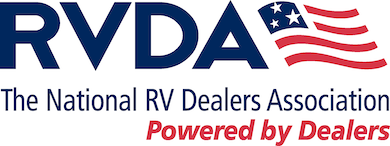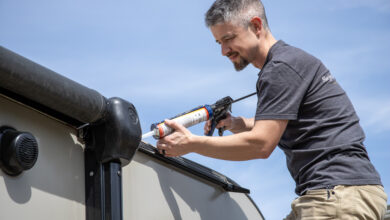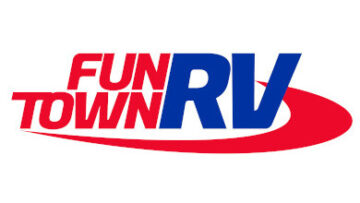General RV Centers Keeps RVers on the Road
With more than 500 service bays across the country and a robust technician workforce, General RV Centers is keeping customers camping.
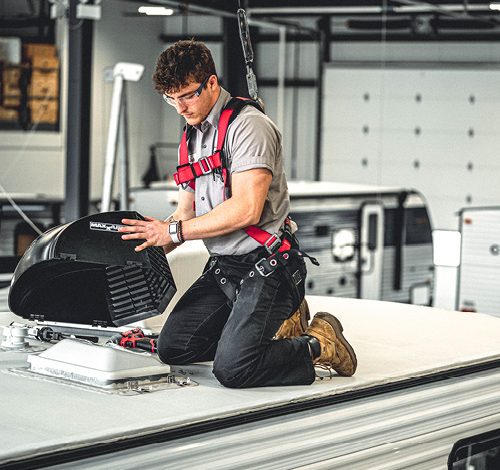
Since the bonanza of RV sales in recent years, service and repair have become increasingly important in the industry, but for General RV Center it’s always been that way. Take, for one example, its new inspection facility in Bristol, Indiana, which shines as an example of the company’s focus on service, now becoming the epicenter of all its PDI (pre-delivery inspection) work.
“Part of the reason for building the inspection facility was to open up our capacity to take on more service work at our stores,” says Corporate Vice President of Operations Kerry Porter, who is responsible for service, parts, IT and fixed operations.
General RV’s headquarters are at its Wixom, Michigan, dealership, one of 14 locations across the United States. It’s an employee-driven company, led by President Loren Baidas and CEO Rob Baidas who started in 1962, with founder Abe Baidas first operating from a gas station in Detroit.
Today, General RV employs approximately 2,000 team members and maintains a collective inventory of 5,000 RVs across all locations, including its newly minted store in Elizabethtown, Pennsylvania. Altogether, there are more than 500 service bays.
“We’ve also recently opened six more bays in our Chicago location with a paint booth, and 10 additional bays in North Canton, Ohio,” Porter says. “We’re going to continuously add bays strategically where we see fit – and where the consumers demand it, quite honestly. “The one constant in the RV industry is service. Sales have their peaks and valleys, but service just keeps climbing – it’s a longer hill to climb, but you’re still climbing it. The more that we put coaches out over the curb, the more expectations from the consumer have changed.”
General RV first noticed the shift in expectations beginning in 2017, and particularly since COVID-19 changed the industry in 2020. The demographics of the customers changed to a degree, with many being first-time buyers who often compare RVs to their experiences in the automotive repair world, says Service and Customer Experience Director Laura Dobbs, who manages corporate policies and procedures for service, as well as General RV Center’s Customer Care Department that oversees escalated customer issues for specialized, additional attention.
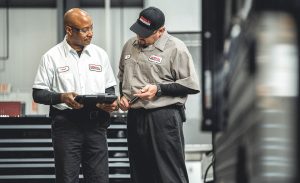
“We really had to educate the customer about the repair process to help adapt in order to set realistic expectations. It just isn’t as easy to do the same repair on an RV as it is on a car – or often they’re not even close to being similar repairs. Setting realistic expectations for firsttime RV owners is really important, but we’re also in a time today that everything is ‘next-day’ or within hours. Companies like Amazon really changed expectations for turnaround times in today’s world, so it’s necessary to explain to customers what it’s like to perform RV service while also pushing ourselves to create new standards for timely service. What might have been accepted as ‘good enough’ as an industry yesterday doesn’t hold true for us today.”
A scratch on a countertop, for example, doesn’t keep RVers from camping, so General RV suggests to owners that something of that nature can wait until after the season, and instead have critical-need repairs take priority. It’s those types of conversations that help educate new RVers and set expectations.
“It’s what we have to do – and continue to do,” Dobbs says.
It’s also important to educate customers on basic owner RV maintenance responsibility requirements, which is a message that General RV drives through its marketing, but often occurs when they come in for service.
RVers are provided a courtesy lane inspection that covers a number of items considered as customer maintenance.
“It helps them to continue to protect their investment and get ahead of some major issues that could prevent them from using their coach,” she says.
Porter adds, “We want them to have as many trips as possible, so that they are really engaged in the RV industry and don’t want to leave. It’s not about what’s convenient for General RV, it’s about what’s convenient for the customer and being more customer-centric around service. Again, it’s education. We have customers who are on their third and fourth RV, and they ‘get it.’ Some older millennials don’t understand life without a 10-minute oil change, and as the world continues to evolve it’s important for us in the industry to evolve, too, and push it forward.
“In parts of the U.S., there are many months where people don’t use their RV. It’s a perfect time to get noncritical repairs done in time for the next season so they can build many more great camping memories.”
Keep You Camping
General RV’s “Keep You Camping” program represents the company’s overall philosophy for RV service and repair, Dobbs says.
“Our responsibility is to identify – and help our customers identify – items that are critical repairs that prevent customers from using their coach.”
The Keep You Camping program covers critical repairs that don’t require service appointments, including recalls, LP (propane) leak, appliance failures, no power (110-volt or 12-volt), slideout(s) not functioning, interior or exterior water leaks, trailer brake or brake light failures, head lamps and windshield wiper system not functioning.
“They can come in at their convenience right away so we can inspect their unit. We can make a repair plan for them – whatever it takes to get them camping again, either same day or within 24 hours is our goal,” she says. “We want to get them back on the road as quickly as possible.”
General RV has conducted data research as it pertains to service and repair cycle times, though COVID-19 has upended some of those analytics.
“We had some really good data on what our cycle times were before and after we launched Keep You Camping in Prior to the pandemic, General RV averaged eight to 10 days for service and repairs. 2018. Comparing them now, though, is like apples to oranges, but we’re able to get more consistent parts now – and staff needed – to give customers the fastest possible service. COVID threw a wrench into everything we were looking at analytically.”
Having said that, General RV had average cycle times of eight to 10 days by late 2019. But when the pandemic arrived, people were more interested in getting out of their homes, rather than getting their RVs serviced, Porter says.
In 2021, the dealership was still having lingering supply chain issues, whether it was a critical part or not.
“We had to do crazy things, such as researching and sourcing parts locally just to get the consumer back on the road, because every manufacturer wasn’t giving up, for example, a water pump – they had coaches to build.”
An Industry Differentiator
The Keep You Camping program hasvbecome a differentiator for General RVvamong the competition.
“There are others in the industry that have plagiarized it and gone down a similar route,” Porter says. “But our view overall, and why it makes us different, is we consider it from a customer service aspect – the consumer bought their coach to go camping in it – not to have it sit on our lots for an extended period of time. That’s why we’ve narrowed those Keep You Camping items to ensure people can go out and enjoy their RVs.”
He notes that some regions in the U.S., such as the Midwest, have very short camping seasons – some lasting only 12 to 14 weeks. And consumers are sensitive to that.
“We don’t focus too much on the competition; our focus is being the best that we can be to make sure customers maximize their seasons. Everything after that takes care of itself,” Porter says.
Building a Skilled Technician Workforce
As General RV continues to ramp up focus on service and repair, as well as adding more bays, there is also a need for more technicians, which are sourced anywhere from Craigslist to relationships with area vocational schools and training programs. Once brought on board, entry-level techs enter the company’s apprenticeship program.
“We try to advertise for technicians anywhere we can,” Dobbs says. “Including putting up giant banners outside our dealerships – any way we can get the word out that we’re hiring. We also have a fantastic recruiting office that continues to spread the word, too.”
When it comes to veteran, skilled technicians, they are usually found and recruited through conversations with present staff, who may be friends, family or past colleagues. Both the incoming techs and the recruiting techs are offered incentives.
“We try to get creative in our efforts when we hear about a good prospect. Our biggest focus once we have somebody with the potential and a desire to learn is what we do with them from there.”
General RV works with the RV Technical Institute (RVTI) as joint learning partners, invested in educating lead training technicians at each of its locations, who become certified to teach the RVTI program from Level 1 to Level 2, and then help facilitate continuing education up to master technician certification.
“Our techs don’t have to be sent out of their stores, they can get the training right there, in-house,” Dobbs says. “Our goal is to continue to drive that education for our technicians. Sometimes they initially come to us as a cleaner or a porter – it could be any role – and if we see a desire to learn, then we’ll give them a shot.”
The first 90 days of technician onboarding is largely getting them acquainted with General RV processes and basics, from which they then proceed to RVTI Level 1 and straight into Level 2. Lead training techs are paid hourly to compensate for their time.
“We don’t expect them to turn any hours; we actually expect them to turn hours through training the technicians,” she adds.
In addition to in-store lead training technicians, General RV also has a corporate technical trainer, who oversees individual store programs and seeks out more continuing education, for both entry-level and seasoned techs. Suppliers such as Lippert and Winegard also provide in-dealership training, and techs are sent to manufacturer and third-party facilities, though the goal is to keep techs at the dealership location.
“Culture means a lot of things to a lot of different people,” Dobbs says. “We’re family-owned and we take care of our employees and help them grow – many come here looking for a job and discover a career. So long as there’s a desire to learn, we’ll continue to invest in them.”
